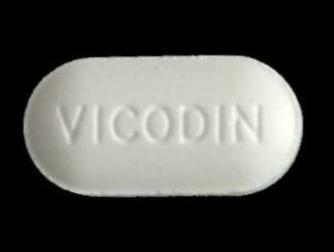Hydrocodone Rescheduling Fueled Online Drug Sales
/By Pat Anson, Editor
Hydrocodone was once the most widely prescribed and one of the most abused drugs in the United States. Over 135 million prescriptions were filled in 2012 for hydrocodone combination products such as Vicodin, Lortab and Norco.
Then in 2014 the Drug Enforcement Administration rescheduled the opioid painkiller from a Schedule III controlled substance to the more restrictive category of Schedule II. The move was intended to reduce the prescribing of hydrocodone – and it quickly had the desired effect. By 2017, only 81 million prescriptions for hydrocodone were filled.
But while legal prescriptions for hydrocodone have gone down, the DEA’s 2014 rescheduling may have fueled a surge in illegal online sales of hydrocodone and other opioids, according to a new study in the British Medical Journal.
“The scheduling change in hydrocodone combination products coincided with a statistically significant, sustained increase in illicit trading of opioids through online US cryptomarkets. These changes were not observed for other drug groups or in other countries,” wrote lead author Jack Cunliffe, PhD, a lecturer in data analysis and criminology at the University of Kent.
Cunliffe and his colleagues studied these online cryptomarkets – also known as the “dark web” – by using web crawling software that scans the internet looking for websites dedicated to online sales of illicit drugs. From October 2013 to July 2016, they found that sales of prescription opioids on the dark web nearly doubled, from 6.7% to 13.7% of all online drug sales.
“Our results are consistent with the possibility that the schedule change might have directly contributed to the changes we observed in the supply of illicit opioids,” said Cunliffe. “One explanation is that cryptomarket vendors perceived an increase in demand and responded by placing more listings for prescription opioids and thereby increasing supply.”
‘Iron Law of Prohibition’
The increase in supply and demand wasn’t just for hydrocodone. The researchers also noted a growing number of online listings for more potent opioids, such as oxycodone and fentanyl. They attribute that to the “iron law of prohibition” – banning or reducing the supply of one drug encourages users to seek more potent drugs from new sources.
“We found that users were first buying oxycodone followed by fentanyl. Drug users adapt to their changing environment and are able to source drugs from new distribution channels if needed, even if that means by illegal means. In a context of high demand, supply side interventions are therefore likely to push opioid users towards illicit supplies, which may increase the harms associated with their drug use and make monitoring more difficult,” Cunliffe wrote.
As PNN has reported, business is booming for illegal online pharmacies. As many as 35,000 are in operation worldwide and about 20 new ones are launched every day. About half are selling counterfeit painkillers and other medications. Overdoses involving fentanyl and other synthetic opioids – most of them purchased on the black market – have also increased and now outnumber those linked to prescription opioids.
"The study’s findings are troubling but not surprising. As you’ve well reported, there are often unexpected and negative externalities resulting from well-intended anti-addiction interventions," Libby Baney, Principal, Faegre Baker Daniels Consulting and senior advisor to Alliance for Safe Online Pharmacies said in an email to PNN.
"What’s worse still, when buying medicine online - whether from dark or surface web sellers - it is virtually impossible for the consumer to know if the product is what it claims (in this case, an opioid like oxycodone) or is a dangerous counterfeit laced with a deadly dose of elephant tranquilizer or poison. As too many victims have shown, even one pill can kill."
A recent study at the University of Texas Medical Branch also found an association between hydrocodone's rescheduling and increased opioid abuse. Researchers found that hydrocodone prescriptions for Medicare patients declined after rescheduling, but opioid-related hospitalizations increased significantly for elderly patients who did not have a prescription for opioids.





